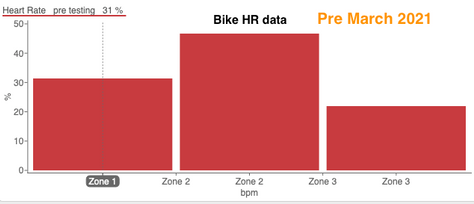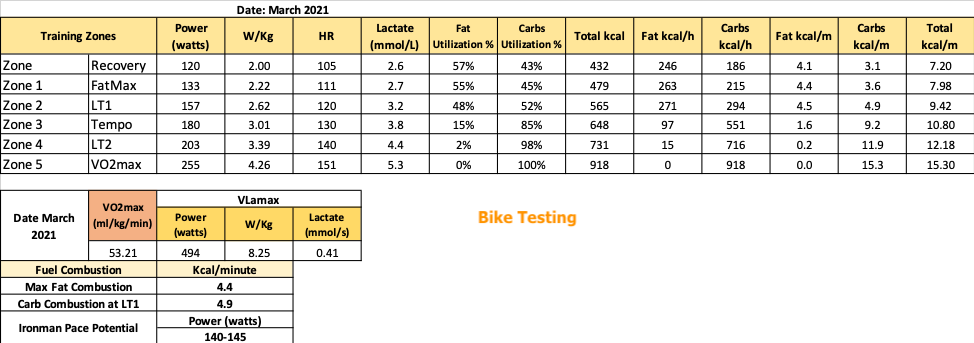Getting Back to Training Pain Free
- Jorge Martinez
- Oct 13, 2021
- 5 min read
Back in late March 2021, I started coaching Ana. I first met her a few weeks before when she was seeing Kyle Shuma at Mobility Chiro Therapy where I have the FreeSpeed lab as he was helping to treat a chronic back injury that had been affecting her for months. Said injury limited the amount of riding/running she could do significantly. That day we chatted a bit at the lab to officially meet face to face and she told me she was interested in the physiological metabolic testing.
Kyle keep treating Ana working his PT magic and a few weeks later we schedule a bike fit for her. Knowing the back issue, I changed her seat and adjusted her saddle/front end position. With a team approach, Kyle treated the symptoms, we advised a strengthening routine, and as mentioned, we corrected her bike-fit to avoid further irritation. We also did the metabolic testing to identify the areas she needed to work on (fitness-wise) as she had already signed up for Ironman Texas originally scheduled in April but around this time, it was rescheduled to October.

By April, between Kyle’s treatment, the bike-fit, the strength training/stretching, and starting the training program, her chronic back pain start improving dramatically and by May she was doing training with significantly less discomfort. (It eventually became a non-issue!)
From the physiological metabolic profile, the focus to develop a program for her was primarily intending to be able to get healthy so she could train pain-free. As mentioned, before this she was unable to do consistent training as riding her bike for long was rather painful for the past months, and running became rather challenging in recent months.
From March to Oct 2022 she had been averaging ~12:42 a week when she was doing ~7h of riding, ~3h running and the rest was swimming. From Nov 2020 to Feb 2021 as she was training for IMTX, her volume was impacted by the back pain the most averaging 9:24 hr from which 4:30 were from riding, 2:30h from running, and the rest swimming.

Below is Ana’s training distribution based on heart rate data from that period pre-starting our program and doing the testing. (<LT1 = zone 1, LT1/LT2 = zone 2, LT2> = Zone 3)
From testing in March, I learned that due to her inability to ride/run consistently from the chronic back pain in recent months both her FatMax and LT1 for bike & run were taking place at a higher lactate concentration (3.2 mmo/L) which suggested her ability to use fat for fuel was somewhat limited. The good news was that although her lactate accumulation past LT1 would continue to increase, it wasn’t as dramatic most likely due to the training Ana was able to do in the past pre-back pain.
From the test results, I knew we didn’t need to do too much intense work as she needed work below LT1 to develop her Fat utilization & lactate clearance. Plus, due to the back pain, avoiding intensity and focusing on strength training would be a much more valuable approach for the time been.
Based on the testing, I also learned Ana’s aerobic capacity (VO2max) was actually rather solid as well as her LT2 (given her previous training distribution/injury) so we weren’t going to spend much time addressing that. Again, the goal was to get healthy, train pain-free, while improving fact utilization along the way. At the time, her Ironman bike potential was ~140-145 watts, and her Ironman run pace ~ 9:30 min/mile due to the limited 4.4 & 5.4 kcal/min from fat she would “burn” for the bike & run respectively
By June, Ana’s training was coming along rather well as she was able to train mostly pain-free, therefore, her fitness improved rather well. I don’t think it was specifically because of the program, but more because now she was healthy able to train consistently.
But using the metabolic testing as a guide to inform (not dictate) the training, we were able to place emphasis on the areas that would yield greater results for *her*. Below you can see her training distribution from March to September 2021.
As you can see, we spent around 70% of the time at HR below LT1 (zone 1), around 28% and 22% between LT1/LT2 (zone 2) for bike and run, and the rest above LT2 or VO2max (zone 3). As mentioned above, the fact Ana was now training pain-free and be able to be consistent allows her to gain fitness fairly quickly. Not necessarily because we were doing anything special. Simply, because now she could get back to her fitness baseline and make her potential a reality.
This is noticeable in the post-Match 2021 training volume below. On average, she now was able to train about 16 hr per week, an 7h improvement from recent months! Better yet, now she was accomplishing that training load from ~9h of riding, ~3:30hr running and the rest from swimming and strength training.

By late June she raced Lubbock 70.3 and achieved a 3rd place podium and a slot for 70.3 World Championship in St George in September. Around that time, we began placing more emphasis on training for “performance” BUT, the goal of training healthy morphed to “training while staying healthy/pain-free”. And thus, we didn’t change the program, we kept doing lots of strength training and we continued building towards Ironman Texas.
By Aug/Sept, we tested again, and below are her metabolic results. The main thing to notice is that although LT2 stayed roughly the same, her VO2max improved despite not doing a major focus on that. Perhaps because Ana being healthy now allowed her to perform at her best while in the 1st test maybe she was unable to do so. Still, her FatMax and LT1 improved by 10% on the bike while on the run FatMax improved by ~ 5% and LT1 ~2%. On the bike she achieved the greatest fitness gain improving her fat utilization from 4.4 kcal/min to 5.1 kcal/min which is a significant change.
As for running, because her VO2max improved slightly while her VLamax (anaerobic capacity) decreased as well, despite the more modest, her energy utilization (kcal/min) improved at Ironman run pace nevertheless. This set us to go into Ironman knowing she had the potential to ride ~155-160w and run ~9 min/mile
Fast forward to Ironman Texas – we approached the race focusing only on execution. Ask Ana and she’ll tell you we never talked about time splits expectations, podiums, Kona slots, etc. I knew what she could do (from the testing) but for the race plan, I only provided efforts ranges: swim at a steady effort, ride ~155w, and run by HR. NO time goal. The only goal was for her to celebrate the fact she was the fittest she has been in years. That she was pain-free and her job was to execute pacing and fueling to the best of her abilities.
After producing the best AG swim, she led the bike until the last few miles where she dropped to 2nd. Still, she rode strong averaging 156w with a normalized power of 159w. (that’s great execution!). As for the run, she ran according to plan by HR (~140-145bpm), and as she regained the lead by mile 12.5 and managed an 8:54 min/mile pace until mile 18 where fatigue and the heat caught up with her and slowed her down quite a bit. Still, by then she has built a solid lead and was able to win her age group with, finished 4th overall, and earn her ticket to Kona.

Of course, this field didn’t have any pros and the field was the smallest is been in years, but, you race whoever shows up and I’m just super excited about what we can strive for next season. The goal will remain for Ana to train pain-free, have fun, and guiding the training with the testing to inform our decisions and achieve greater fitness gains.
Congratulations Ana!

























Comments